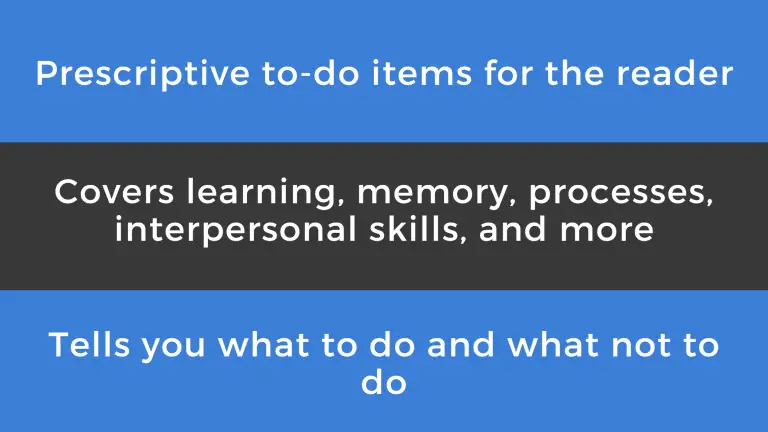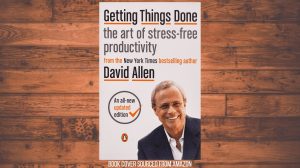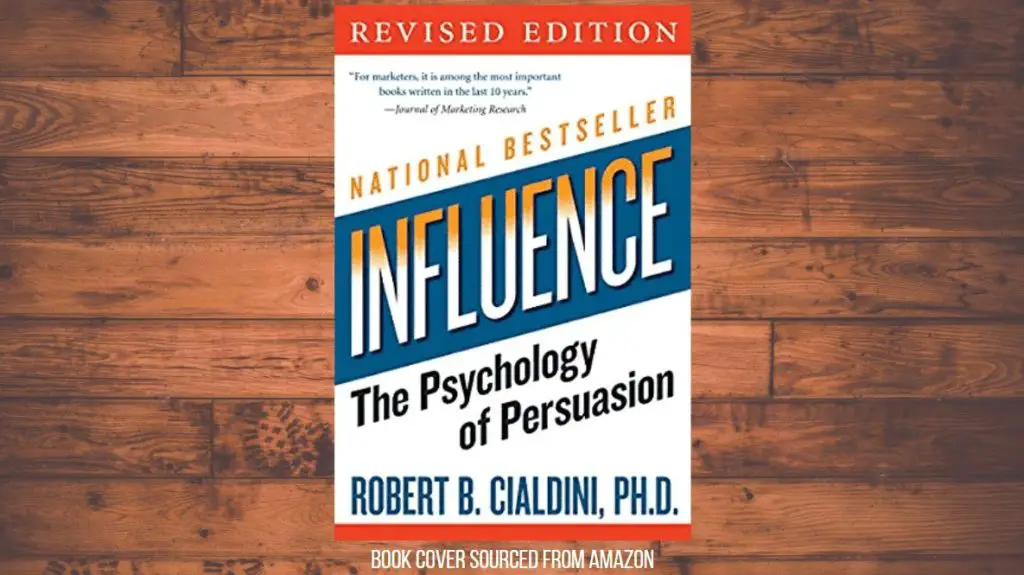This post may contain affiliate links, which means I’ll receive a commission if you purchase through my links, at no extra cost to you. Please read full disclosure for more information.
ABOUT
- Title: A Mind for Numbers
- Sub-title: How to Excel at Math and Science (Even If You Flunked Algebra)
- Author: Barbara Oakley, Ph.D.
- About the author: After high school, Barbara Oakley enlisted in the U.S. Army and spent a year studying Russian at the Defense Institute in Monterey California. She never saw herself as a math or science person. She went on to earn a bachelor’s degree in electrical engineering, a master’s in electrical and computer engineering, and a doctorate in systems engineering. Now she works at Oakland University as a professor of engineering.
- Pages: 336
- Published: July 2014
- Link to book
HIGH-LEVEL SUMMARY
Early into A Mind For Numbers, author Barbara Oakley mentions how your brain has amazing abilities, but didn’t come with an instruction manual. This book can be that instruction manual.
Barbara connected with hundreds of intellectuals including world-leading professors and teachers, as well as professionals in math, science, psychology, business, and health sciences.
A Mind For Numbers offers the tools you need to learn intimidating material such as math and science. You’ll find new ways to improve your knowledge and skills. You’ll LEARN how to learn and how the most effective strategies seem counterintuitive.
Barbara Oakley flunked her way through her math and science courses in high school. She enlisted in the U.S. Army upon graduating and eventually found herself in the engineering field, which she never would have imagined. In her book, she shares all of her secrets.
The book covers a comprehensive amount of topics:
- Why trying too hard can hurt you
- The relation between learning and creating
- How to avoid the illusion of competence
- Why we procrastinate and how to beat it
- A variety of tools, tips, and tricks
- How to enhance your memory
- Sculpting your brain
- Recognizing and avoiding overconfidence
- Tips for test taking
RECOMMENDATION
If you are particularly looking to improve your ability to learn math and science, A Mind For Numbers is a great resource.
The author grew up disliking math but ended up getting engineering degrees for her bachelor’s, master’s, and doctorate. With that in mind, you can have confidence that she is offering sound advice and tips.
Although the book is catered towards learning math and science, I believe this is a great book on learning in general. The information can be applied to learn other topics and skills as well. In this book, you’ll be equipped with tactics and techniques to learn, memorize, and work more effectively.
TOP 35 TAKEAWAYS
In no particular order
1. A lot of learners use ineffective and inefficient strategies. They most commonly use the strategy of repeated reading. We and other researchers have found that this passive and shallow strategy often produces minimal or no learning.
2. As you first begin looking at a chapter or section of a book that teaches concepts of math or science, it helps to take a “picture walk” through the chapter, glancing not only at the graphics, diagrams, and photos, but also at the section headings, summary, and even questions at the end of the chapter, if the book has them.
3. Focused versus Diffuse Thinking: Highly attentive states and more relaxed resting-state networks. It seems you frequently switch back and forth between these two modes in your day-to-day activities. Focused-mode thinking is essential for studying math and science. It involves a direct approach to solving problems using rational, sequential, analytical approaches. Diffuse-mode thinking is also essential for learning math and science. It allows us to suddenly gain a new insight on a problem we’ve been struggling with and is associated with “big-picture” perspectives. Diffuse-mode thinking is what happens when you relax your attention and just let your mind wander.
4. Why Math and Science Can Be More Challenging. It’s called the Einstellung effect. In this phenomenon, an idea you already have in mind, or your simple initial thought, prevents a better idea or solution from being found.
5. If you are trying to understand or figure out something new, your best bet is to turn off your precision-focused thinking and turn on your “big picture” diffuse mode, long enough to be able to latch on to a new, more fruitful approach.
6. When you procrastinate, you are leaving yourself only enough time to do superficial focused-mode learning.
7. For most people, shifting from focused to diffuse mode happens naturally if you distract yourself and then allow a little time to pass. You can go for a walk, take a nap, or go to the gym. Or you can work on something that occupies other parts of your brain: listening to music, conjugating Spanish verbs, or cleaning your gerbil cage. The key is to do something else until your brain is consciously free of any thought of the problem.
8. Sleep is probably the most effective and important factor in allowing your diffuse mode to tackle a difficult problem.
9. You may be surprised to discover that learning slowly can mean you learn more deeply than your fast-thinking classmates. Learning well means allowing time to pass between focused learning sessions, so the neural patterns have time to solidify properly. It’s like allowing time for the mortar to dry when you are building a brick wall, as shown on the left.
10. There are two major memory systems: Working memory—like a juggler who can keep only four items in the air. Long-term memory—like a storage warehouse that can hold large amounts of material, but needs to be revisited occasionally to keep the memories accessible. Spaced repetition helps move items from working memory to long-term memory.
11. When you get too little sleep, the buildup of these toxic products is believed to explain why you can’t think very clearly. Part of what this special sleep-time tidying does is erase trivial aspects of memories and simultaneously strengthen areas of importance. Finally, sleep has been shown to make a remarkable difference in people’s ability to figure out difficult problems and to find meaning and understanding in what they are learning.
12. Chunks are pieces of information that are bound together through meaning. one of the first steps toward gaining expertise in math and science is to create conceptual chunks—mental leaps that unite separate bits of information through meaning.
13. Illusions of Competence and the Importance of Recall. Attempting to recall the material you are trying to learn—retrieval practice—is far more effective than simply rereading the material. Using recall—mental retrieval of the key ideas—rather than passive rereading will make your study time more focused and effective.
14. You don’t want to wait too long for the recall practice, so that you have to start the reinforcement of the concept from scratch every time. Try to touch again on something you’re learning within a day, especially if it’s new and rather challenging.
15. Merely glancing at the solution to a problem and thinking you truly know it yourself is one of the most common illusions of competence in learning.
16. Practicing math and science problems and concepts in a variety of situations helps you build chunks—solid neural patterns with deep, contextual richness. The fact is, when learning any new skill or discipline, you need plenty of varied practice with different contexts.
17. Recalling material when you are outside your usual place of study helps you strengthen your grasp of the material by viewing it from a different perspective. People sometimes lose subconscious cues when they take a test in a room that looks different from where they studied. By thinking about the material while you are in various physical environments, you become independent of cues from any one location.
18. Interleaving means practice by doing a mixture of different kinds of problems requiring different strategies. Continuing the study or practice after it is well understood is called overlearning. But be wary of repetitive overlearning during a single session in math and science learning—research. You want your brain to become used to the idea that just knowing how to use a particular problem-solving technique isn’t enough—you also need to know when to use it.
19. We procrastinate about things that make us feel uncomfortable. But what makes us feel good temporarily isn’t necessarily good for us in the long run. Procrastination can be like taking tiny amounts of poison. It may not seem harmful at the time. But the long-term effects can be very damaging.
20. Habits such as procrastination have four parts: The cue, the routine, the reward, and the belief. Change a habit by responding differently to a cue, or even avoiding that cue altogether. Reward and belief make the change long-lasting.
21. Focus on the process (the way you spend your time) instead of the product (what you want to accomplish).
22. STEPS TO BUILDING A POWERFUL CHUNK. Work a key problem all the way through on paper. Do another repetition of the problem, paying attention to the key processes. Take a break. You can study other aspects of the subject if you need to, but then go do something different. Sleep. Before you go to sleep, work the problem again. Do another repetition. As soon as you can the next day, work the problem again. What you are doing is building and strengthening an increasingly interconnected web of neurons—enriching and strengthening your chunks.
23. To a great degree, the highest-performing people I know are those who have installed the best tricks in their lives. Self-Experimentation: The Key to a Better You. Don’t do X for several weeks, then you do X for several weeks.
24. Each day, write a list of the tasks that you can reasonably work on or accomplish. Try to write this daily task list the evening before. Why the day before? Research has shown this helps your subconscious to grapple with the tasks on the list so you figure out how to accomplish them.
25. When you don’t write your tasks down in a list, they lurk at the edge of the four-or-so slots in your working memory, taking up valuable mental real estate. But once you make a task list, it frees working memory for problem solving.
26. People who make a habit of getting their work done in binges are much less productive overall than those who generally do their work in reasonable, limited stints.
27. The Power of Memorable Visual Images. Try making a very memorable visual image representing one key item you want to remember. The more neural hooks you can build by evoking the senses, the easier it will be for you to recall the concept and what it means.
28. The memory palace technique—placing memorable nudges in a scene that is familiar to you—allows you to dip into the strength of your visual memory system. Learning to use your memory in a more disciplined, yet creative manner helps you learn to focus your attention, even as you create wild, diffuse connections that build stronger memories.
29. Part of the key to creativity is to be able to switch from full focused concentration to the relaxed, daydreamy diffuse mode. Focusing too intently can inhibit the solution you are seeking—like trying to hammer a screw because you think it’s a nail. When you are stuck, sometimes it’s best to get away from a problem for a while and move on to something else, or to simply sleep on it.
30. Equations are just ways of abstracting and simplifying concepts. This means that equations contain deeper meaning, similar to the depth of meaning found in poetry. Your “mind’s eye” is important because it can help you stage plays and personalize what you are learning about.
31. Transfer is the ability to take what you learn in one context and apply it to something else. It’s important to grasp the chunked essence of a mathematical concept, because then it’s easier to transfer and apply that idea in new and different ways. Multitasking during the learning process means you don’t learn as deeply—this can inhibit your ability to transfer what you are learning.
32. Learning on your own is one of the deepest, most effective ways to approach learning: It improves your ability to think independently. It can help you answer the strange questions that teachers sometimes throw at you on tests.
33. It’s worth repeating, in bold letters: Testing is itself an extraordinarily powerful learning experience. If you compare how much you learn by spending one hour studying versus one hour taking a test on that same material, you will retain and learn far more as a result of the hour you spent taking a test.
34. If you are panicked on a test, momentarily turn your attention to your breathing. Relax your stomach, place your hand on it, and slowly draw a deep breath. Your hand should move outward, and your whole chest should expand like a barrel.
35. Your mind can trick you into thinking that what you’ve done is correct, even if it isn’t. This means that, whenever possible, you should blink, shift your attention, and then double-check your answers using a big-picture perspective, asking yourself, “Does this really make sense?”
WHAT I LIKED

Prescriptive to-do items for the reader
A Mind For Numbers is filled with more to-do items than you’ll be able to remember on your first read. These prescriptive tips are great for readers because they can take them and immediately start applying them to their studies.
Covers learning, memory, processes, interpersonal skills, and more
Barbara Oakley covered much more than just learning and memory. She wrote about habits and processes. She wrote about time management and organization. She discussed certain interpersonal skills that learners should have. Overall, this made for a comprehensive book.
Tells you what to do and what not to do
Not only does the book tell you what to do, but it also tells you what not to do. With awareness of the pitfalls, you can make sure you avoid them at all costs. A big part of moving forward is ensuring that you stay clear of anything that can set you back.
BENEFITS TO YOUR LIFE AND CAREER

Learn math and science (or any topic) more efficiently and effectively
If you are on a path to a career to work with numbers, the concepts in this book will make your life a whole lot easier. If you know how to learn, study, and memorize, you’ll be able to accomplish more during your career.
Learning will come easy to you and you’ll avoid the stress that comes when someone is overwhelmed by a foreign topic.
Understand learning, memory, and the overall brain work
Barbara Oakley will teach you how learning, memory, and the overall brain work.
For example, you’ll learn how memories form and how you can make your memories stronger by increasing the myelin sheath and improving synaptic connections. You’ll also read about the importance of sleep and how useless it is sacrifice sleep for more time to study.
When you know how these things work, you can do a better job at optimizing what you do.
Build effective habits and processes
Habits and processes were a focal point in A Mind For Numbers.
It’s the things you do every single day that make the differences in your life. Understanding how to build great habits and streamlined processes will serve you in multiple areas of your life.
Once you learn to create an effective process for studying, you can create an effective process for losing weight and building muscle; or an effective process for saving money.
In the book, Barbara talked about the ability to “transfer knowledge.” What I just explained is an example of transferring knowledge. You learn to build a process in one area and take that knowledge to build a process in other areas.
15 ACTIONS YOU SHOULD TAKE
1. Take advantage of diffuse-mode thinking by taking a walk, going to the gym, driving with no music, taking a shower, or anything to get your mind off the problem you are trying to solve.
2. Focus intently but briefly with Pomodoro sessions. Do 25 minutes of uninterrupted work and then reward yourself with a 5-minute break.
3. If you are tired, it’s often better to go to bed early and wake up early to study rather than stay up later and continue studying.
4. It’s best to work at math and science in small doses—a little every day. This gives both the focused and diffuse modes the time they need to do their thing so you can understand what you are learning. That’s how solid neural structures are built.
5. When you study, use retrieval, spaced repetition, interleaved practice, testing, and the generation effect. The more effortful the learning, the better; even though it will feel less efficient. Whatever you do, don’t just reread material over and over. Don’t be fooled by the illusions of competence. Avoid overlearning.
6. Build effective chunks with focused attention, understanding of the basic idea, and practicing to help you gain big-picture context.
7. Focus on the process (the way you spend your time) instead of the product (what you want to accomplish).
8. Take advantage of the Law of Serendipity: Lady Luck favors the one who tries.
9. Write tasks and notes down. Use a physical note pad or an app. While trying to remember everything you need to do helps keep your memory strong, it also takes up valuable working memory space. When you write things down, you clear up real estate in your working memory that you can use for other things.
10. Transform distant deadlines into daily ones. Attack them bit by bit. Big tasks need to be translated into smaller ones. Be realistic about what you can reasonable do in any given time. Planning your quitting time is as important as planning your working time.
11. When you feel paralyzed by the enormity of work you need to do, write down three “microtasks” that you can do within a few minutes. This will get the ball rolling and help build momentum.
12. Commit yourself to certain routines and tasks each day. Write your planned tasks out the night before, so your brain has time to dwell on your goals to help ensure success.
13. Simplify and personalize whatever you are studying. One of the most important things we can do when we are trying to learn math and science is to bring the abstract ideas to life in our minds. Use the Feynman technique.
14. Not getting enough sleep the night before a test can negate any other preparation you’ve done. Taking a test is serious business. Just as fighter pilots and doctors go through checklists, going through your own test preparation checklist can vastly improve your chances of success.
15. After every assignment and test, go over your errors, make sure you understand why you made them, and then rework your solutions.
RESOURCES
A Mind For Numbers can be found on Amazon at this link here if you are interested in reading.



